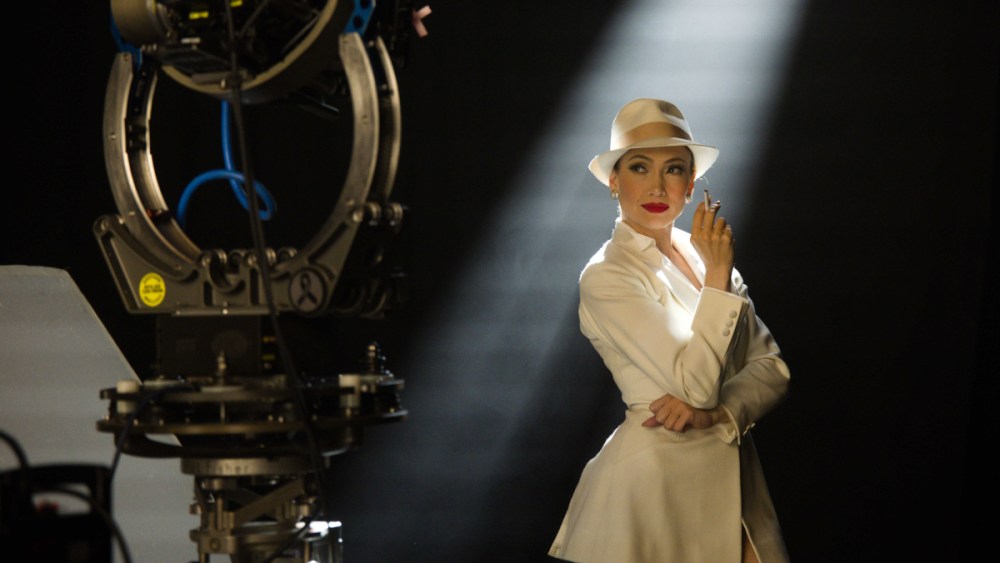Director Bill Condon’s vision for adapting Kiss of the Spider Woman for the big screen was to draw inspiration from old MGM musicals. Specifically, the work of Vincente Minnelli from the Golden Age of Hollywood.
Manuel Puig’s 1976 novel Kiss of the Spider Woman was first made into a film in 1985 by director Hector Babenco. The Condon version, currently in theaters, is based on the stage musical by Terrence McNally, John Kander, and Fred Ebb. Jennifer Lopez plays the dual roles of screen goddess Ingrid and sensual and seductive Aurora.
Production designer Scott Chambliss was instructed by Condon to “imitate the style of those films as closely as possible and not filter it with modern tastes.” These films included An American in Paris, Gigi, and The Ziegfeld Follies.
But the film’s plot made Chambliss feel like he was shooting two movies in one. Set in Argentina in 1983, when a military dictatorship rules the country, Luis (Tonatiu), a gay window decorator, is imprisoned along with political prisoner Valentin (Diego Luna). Lewis hangs up posters of his favorite movie star, Ingrid, and spends his time fantasizing about Ingrid as Aurora.
“We were always thinking of Vincente and his work,” Chambliss says of the incredible musical numbers that played out as fantasies in Lewis’ head. He further added, “Sometimes, like ‘Yolanda and the Thief,’ it was his less successful films that we looked to for inspiration.”

Chambliss says of the cell’s design, “Looking at that little cell and the drama of those two people and the horror of the prison that they were in, we felt that this prison had to be operatic in its drama and visual style. That led us directly to the location that we chose for the prison in Montevideo, which is this grand, terrifying ruin of a former prison.”

The two stories are closely connected through the characters. For Aurora’s Hideout, Chambliss drew inspiration from Hollywood’s Golden Age musicals, particularly the 1953 film “Sombrero.” “Cyd Charisse is dancing on a soundstage on a fake mountaintop with a two-dimensional background right behind his head and these ridiculous sculptures and rocks. It’s the most amazing thing ever,” he says. The sheer artificiality of the scene was what he and Condon wanted to capture. “Spider-Woman’s lair itself was the perfect moment to do that.”

Chambliss admitted that no visual effects tricks were used in the film, “aside from inserting some deep backgrounds where appropriate.” Aurora’s spider web is made with thread and glue, very similar to how old musicals were produced. “It couldn’t have been more old-school, and it was so much fun,” says Chambliss.

